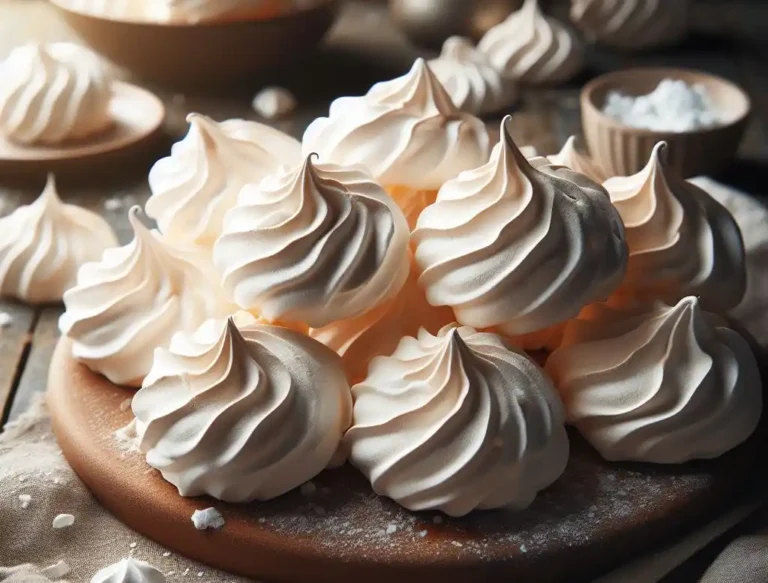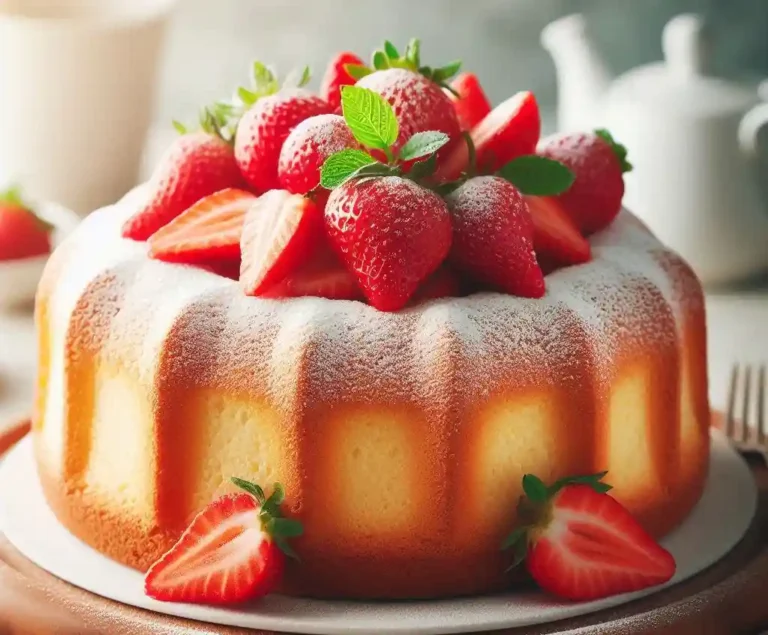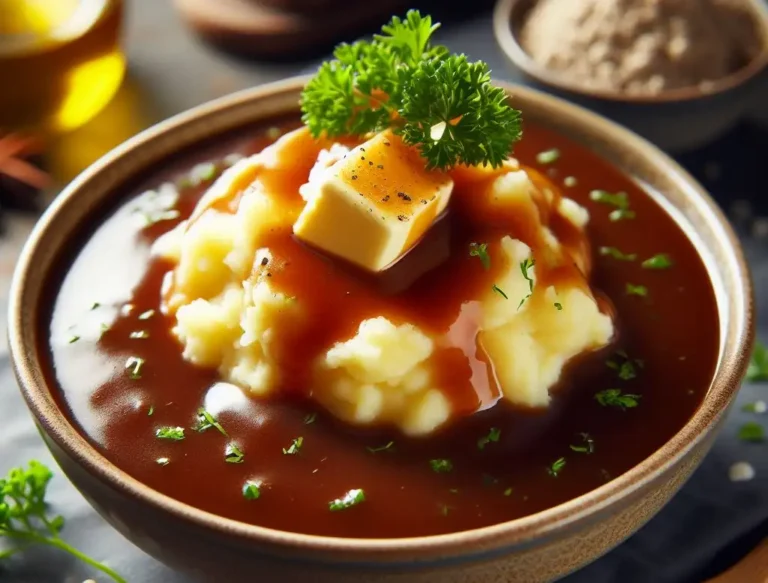How to Make Biscuits with Just Flour and Water? – Quick and Easy
Have you ever wanted to make biscuits but found yourself lacking some of the typical ingredients like butter or milk? Fear not! You can still make delicious biscuits with just flour and water.
In this blog post, we will walk you through the simple steps of making biscuits with just flour and water.
These biscuits are quick, easy, and perfect for last-minute side dishes or snacks. Let’s get started on creating these delightful treats: Biscuits with Just Flour and Water.
How to Make Biscuits with Just Flour and Water? – A Quick Overview

Ingredients:
- 2 cups all-purpose flour
- 1/2 cup water
- Salt (optional)
Instructions:
- In a large mixing bowl, combine the flour and salt (if using).
- Gradually add in the water while mixing the flour with a fork until a dough forms.
- Knead the dough for 5-7 minutes until it becomes smooth and elastic.
- Divide the dough into 6-8 equal pieces.
- Roll each piece into a ball and flatten slightly into a disk shape.
- Heat a non-stick skillet or griddle over medium heat.
- Cook the biscuits for 2-3 minutes on each side, or until they are golden brown and cooked through.
Tips:
- Use a high-protein flour, such as bread flour, for a better texture.
- Adjust the amount of water based on the humidity and type of flour used.
- Do not overmix the dough to prevent toughness.
- Cook the biscuits immediately after shaping for the best results.
Variations:
- Add a pinch of salt for flavor.
- Use a mixture of all-purpose and whole wheat flour for a nutty flavor.
- Add herbs or spices, such as rosemary or garlic, for extra flavor.
Benefits:
- Simple and quick to make.
- Requires only two ingredients.
- Can be customized with various flavors and ingredients.
Understanding the Basics of Flour and Water Biscuits

At the heart of flour and water biscuits is these two ingredients’ simplicity and versatility. The success of these biscuits lies in mastering the basic chemistry between flour and water.
When mixed, these ingredients create a dough that, when baked, transforms into a comforting, edible delight. Understanding this dynamic is crucial for those seeking to make biscuits that are not just edible but enjoyable.
This knowledge empowers bakers to tweak the recipe according to their taste preferences and dietary needs, making it a foundational skill for any aspiring biscuit maker.
The technique focuses on the hydration of flour by water, initiating gluten formation which provides the biscuits their structure.
Mastery of this simple base offers endless possibilities for customization and experimentation, making it an essential starting point for creating a variety of biscuit recipes.
Choosing the Right Flour for Your Biscuits

Selecting the optimal flour type is a critical decision when preparing biscuits with just flour and water. While all-purpose flour serves as a reliable baseline for its balanced protein content, ensuring a tender yet sturdy biscuit, adventurous bakers might explore alternative flours.
For instance, bread flour can introduce a chewier texture due to its higher protein content, whereas cake flour could produce a softer, more delicate biscuit.
Regardless of the flour type you settle on, freshness is key. Stale flour can impart off flavors and affect the dough’s hydration levels, compromising the quality of your biscuits.
Experimentation with different flour varieties can be a delightful way to discover your preferred biscuit texture and flavor profile.
The Perfect Water-to-Flour Ratio

Achieving the ideal water-to-flour ratio is a pivotal aspect of crafting biscuits with just flour and water. Striking the right balance is essential; typically, a ratio of about 2 cups of flour to ¾ cup of water works well.
This ratio ensures the dough is manageable and not overly sticky, yet moist enough to hold together and rise into light, fluffy biscuits.
Begin by adding the water gradually to the flour, mixing as you go, to more accurately control the dough’s consistency. Small adjustments may be necessary depending on the specific type of flour used, as different flours absorb water at different rates.
A good rule of thumb is to aim for a dough that is soft to the touch but not sticky, allowing it to be easily shaped without adhering to your hands or the work surface. Remember, the exact ratio can vary slightly, so be prepared to adjust based on the feel of the dough.
Kneading and Shaping Your Biscuits

Kneading your dough is a crucial step for achieving the right texture in your biscuits. Start by folding the dough over itself and gently pressing it down. Repeat this process for about 3-5 minutes until the dough is smooth and pliable.
Avoid over-kneading, as this can make the biscuits tough. For shaping, lightly flour your hands and the dough surface. Pat the dough out rather than rolling it to maintain a tender texture.
Choose your desired thickness—typically, a half-inch works well—and use a round cutter or the rim of a glass to press out biscuit shapes.
If you don’t have a cutter, simply cutting the dough into squares with a knife can also work. This method ensures minimal waste and eliminates the need to re-roll scraps, which could also toughen the dough.
Baking Techniques for the Perfect Crust and Texture
To achieve that desirable golden crust and tender interior for your biscuits, it’s vital to focus on your oven’s heat. Begin by preheating your oven to a hot 450°F, which helps create a burst of steam inside the dough, lifting and setting the biscuits’ structure swiftly.
Place your formed biscuits on a baking sheet that has been warmed in the oven for a few minutes. This step ensures the bottom starts cooking immediately, contributing to a uniformly baked bottom.
Bake for about 10-15 minutes, keeping an eye on the biscuits for that light golden color and ensuring they’ve risen properly.
The high heat initially helps form a crust quickly, while the inside remains soft and fluffy. Avoid opening the oven frequently as this can lower the temperature and affect the bake.
Creative Ways to Flavor Your Biscuits
Exploring the realm of flavors brings an exciting twist to the humble biscuits made from flour and water. By incorporating a variety of add-ins, you can elevate the taste and appeal of your biscuits.
Consider blending in herbs like rosemary or thyme for a savory note, or cinnamon and sugar for a sweet touch.
Grated cheese or finely chopped sun-dried tomatoes can add depth and richness, while a handful of dried cranberries or raisins can introduce a hint of sweetness.
Experiment with these ingredients by mixing them into the dough before shaping your biscuits.
This approach not only customizes the flavor profile but also allows for a personalized baking experience, making each batch of biscuits uniquely delightful.
Troubleshooting Tips for Biscuit-Making
Encountering challenges while making biscuits is a common part of the baking process. If your biscuits turn out too tough, it’s likely the dough was over-kneaded or overworked; remember, a gentle touch is key.
Should the biscuits come out flat, double-check your water-to-flour ratio, as too much flour can weigh the dough down. Uneven baking often results from inconsistent oven temperature or placing the biscuits too close together on the baking sheet.
To avoid these issues, ensure your oven is properly preheated and give each biscuit enough space to expand. Making slight adjustments in your technique or recipe can lead to significant improvements in your biscuit-making endeavors.
Serving Suggestions and Pairings
Your freshly baked biscuits are ready to be devoured in a myriad of ways, making them a delightful complement to any meal. Elevate your biscuits by slathering them with creamy butter, drizzling with rich honey, or topping with your favorite jam for a sweet burst of flavor.
For a savory twist, ladle over some homemade gravy or pair with a hearty stew to soak up all the delicious juices.
These also make a fantastic base for a breakfast sandwich; just add a fried egg, a slice of cheese, and some crispy bacon for a satisfying start to your day.
Whether served as a standalone snack or as part of a larger feast, these versatile enhance any dining experience, inviting you to get creative with your culinary pairings.
FAQs
Q: Is it possible to use gluten-free flour in this recipe?
A: Absolutely, gluten-free flour can be a great alternative for those with dietary restrictions. However, the texture and moisture absorption may vary, so adjustments to the water amount might be necessary to achieve the right dough consistency.
Q: Can I add flavors or ingredients to these basic flour and water?
A: Yes, adding flavors is encouraged! Incorporate herbs, spices, sweeteners, or even cheese into the dough before baking to create unique variations. Just be mindful of adding wet ingredients, as they can alter the moisture balance of the dough.
Q: What’s the best way to store these?
A: To maintain freshness, store the biscuits in an airtight container at room temperature. They should stay fresh for a couple of days. For a warm, just-baked experience, a quick reheat in the oven or toaster oven works wonders.

Amelia Winthrop is the creative force behind Skillful Cooking, a blog that serves as a canvas for her culinary creations. With a philosophy that cooking should be accessible and enjoyable, Amelia crafts recipes that blend simplicity with sophistication. Her intuitive approach to the kitchen encourages others to embrace the joy of cooking and the pleasure of sharing meals with loved ones.







